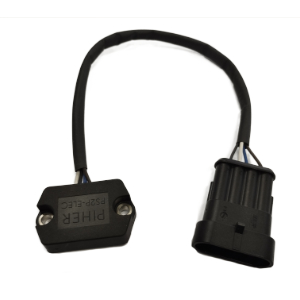A tilt sensor can be utilized in engine management systems to monitor the orientation or inclination of the engine or vehicle.

Here are a few ways a tilt sensor can be employed in engine management:
- Anti-Rollover Protection: Tilt sensors can detect excessive tilting or rolling movements of a vehicle. In engine management, this information can be used to trigger safety mechanisms, such as activating stability control systems or adjusting the engine’s power output to prevent rollovers and improve vehicle stability during cornering or sudden maneuvers.
- Slope Compensation: In off-road or hilly terrains, a tilt sensor can provide data about the vehicle’s angle of inclination. Engine management systems can utilize this information to adjust fuel delivery, throttle response, or transmission gear shifting to compensate for the slope and optimize engine performance and drivability.
- Hill Start Assist: When starting a vehicle on an incline, a tilt sensor can detect the angle of the slope. The engine management system can use this information to engage hill start assist functionality, which temporarily holds the brakes to prevent the vehicle from rolling backward while the driver transitions from the brake pedal to the accelerator.
- Tilt Warning Systems: Tilt sensors can be employed to monitor the angle of inclination during vehicle operations. If the vehicle exceeds a predefined tilt threshold, the engine management system can trigger visual or audible warnings to alert the driver about potential risks, such as excessive banking during cornering or off-camber situations.
- Load Balancing: Tilt sensors can aid in load balancing within the engine or vehicle. By measuring the tilt angle, the engine management system can distribute power or adjust suspension settings to optimize weight distribution and enhance overall stability and handling characteristics.
- Off-Road Vehicle Control: Tilt sensors can be instrumental in off-road or rugged terrain applications. By detecting the tilt or pitch of the vehicle, the engine management system can modify engine parameters, traction control systems, or differential locking mechanisms to adapt to challenging terrain conditions and improve traction and control.
- Fuel Level Monitoring: In some engine management systems, a tilt sensor can be used to determine the fuel level within the fuel tank accurately. By measuring the tilt angle of the vehicle, the system can provide more accurate fuel level readings and ensure more precise fuel management, including fuel consumption calculations and low fuel warnings.
